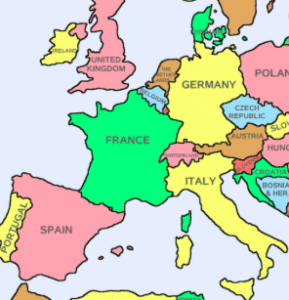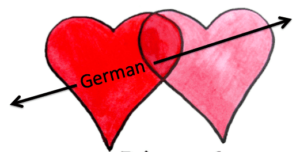My husband and I celebrated our 20th anniversary recently with two of the things we love most—great food and travel. We shared dinner at a community table one night with two other couples in southern France.
It was a table full of polyglots—well except for us.
As we went around the table to establish what language we would use during the dinner, here’s how it went:
- French guy: “Français (French), Allemand (German), Português, e Anglais (English),”
- French woman: French, Portuguese and English.
- Portuguese guy: French, Portuguese, Spanish, Italian, and English
- Portuguese woman: Portuguese, Italian, and English.
- Me: English and Spanish
- My husband: English and a little Spanish
The French woman, Saverine, then announced, “Oui (which she pronounced weh), okay, we will speak English tonight.”
In truth, the conversations flowed beautifully from Portuguese to French to English throughout dinner. The facility with which so many Europeans speak not two but three, four, five,… languages seems so remarkable, and leaves me feeling that we have a lot of untapped linguistic potential in the United States.
How do they do it?
I asked a lot of questions about how they learn so many languages.
- Does it happen in school or out of school?
- In short bursts of immersion or over long periods of time?
- In elementary school or later?
“Oui,” was the answer, “We learn in all of those ways.”
Everybody learns English in school from the very beginning. Most European children take English everyday, and they are expected to speak English during English class.
Practice, practice, practice.

After a few years of English exposure, they continue to take English but also take another language. In southern France, we learned that German is the most common third language offered in school. I would have guessed Spanish given their proximity to Spain and the prevalence of Spanish in the world, mais non.
I love that I can speak two languages, and I am motivated to learn more.
When I present on the topic of determining difference versus disorder in bilingual children, I often present the map below from Slate.com showing the most spoken language by state after English and Spanish.
Pick a language to work on. I am picking German because my grandparents spoke it and I have family in Germany.


So I challenge you. Pick a language. Learn about it. Find a friend to practice with. You don’t have to become fluent—but become familiar.
For those of you who work in the schools and have a leisurely summer ahead of you, use this opportunity to work on your special education terminology in Spanish. Check out the IEP/ARD scripts on our free resources library.
Another favorite site of mine is Innovative Language, where you can sign up for a word of the day in many different languages, and get short lessons online.
Good luck! ¡Buena suerte! Bonne chance! Viel Glück!





Thanks so much for this inspiring post! And happy anniversary!
I accept your challenge–I am working on learning Italian. My husband and I have decided to choose one evening a week to work on Italian together. We are reading the book “In Other Words” by Jhumpa Lahiri aloud. She is a wonderful author who speaks Bengali and English. She has been learning Italian for the past 20 years or so, and wrote this book in Italian about her experiences learning a new language. Each chapter appears in both Italian and English. It is a great learning tool for us, and a beautifully written book.
Buona fortuna!
What a beautiful way to learn a new language! When I learned Spanish, one of my favorite books was a book of short stories that was in Spanish on one page and English on the opposite page. I loved that I could easily check my understanding.
Congratulations on your anniversary! I keep trying to just learn a second language and I’ll keep trying so not sure a third is in my future. Good luck to you though! I wish we (America) did more to develop at least two languages for all beginning with all young children.
Keep trying, Gina! You’ll be speaking Mandarin as your third language before you know it!
I have to say that I am encouraged by the increase in dual language programs in the schools.